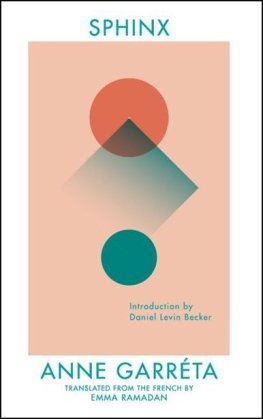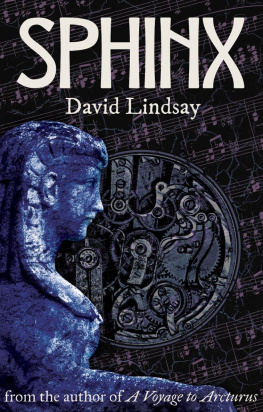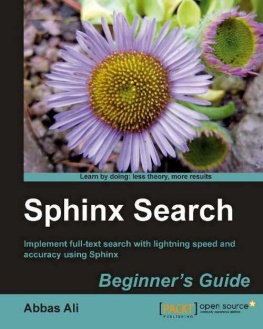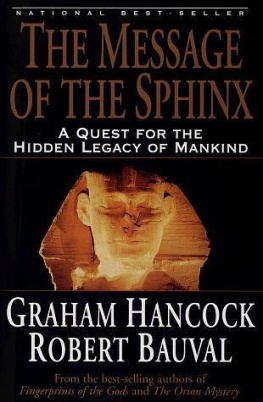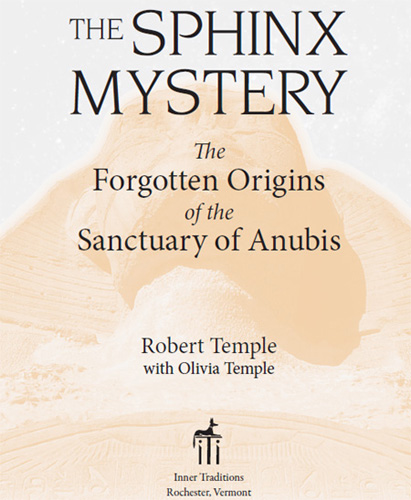
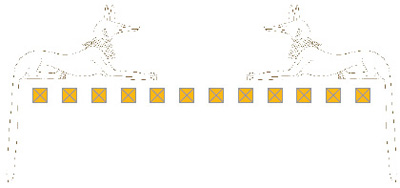
To our friends Mohamed Nazmy of Cairo and Stefano Greco, pianist and musicologist
The Sphinx Mystery
Brilliant! A remarkable work of detailed and painstaking research, integrative thinking, and original insight. The Temples reinterpretation of some Egypts abiding mysteries is more than thought-provoking: it is inspiring.
RUPERT SHELDRAKE, PH.D.,
AUTHOR OF THE PRESENCE OF THE PAST
I was swept straight into this marvelous book. Its brilliant, original, occasionally delightfully malicious, and it showed me just how little I really knew about the Sphinx.
COLIN WILSON, AUTHOR OF
ATLANTIS AND THE KINGDOM OF
NEANDERTHALS AND THE OUTSIDER
ACKNOWLEDGMENTS
We would like to thank Inner Traditions for their enthusiasm for this book and for their excellent work on its preparation and publication. In particular, we would like to thank Ehud Sperling, whose passion for ancient Egypt has continued unabated over the years and whose achievements as a publisher of esoteric and meaningful books for the English-speaking world has done so much to keep the spirit alive for the public in these days of rank commercialism and banality. Thanks also to Jon Graham for inspired work in the field of acquisitions, Jeanie Levitan for her competence as managing editor, Chanc VanWinkle as tireless project editor, Judy Stein and Elaine Cissi as sharp-eyed copy editors, Peri Ann Swan for the cover design, and Jon Desautels for the interior design and layout.
Daud Suttons three wonderful drawings have been a magnificent contribution to the book, and we are all the more grateful in that they were given to us as a gesture of friendship, prepared with infinite patience during his busy schedule.
Michael Lees tireless and cheerful contributions to the scanning, filing, archiving, and above all the meticulous cleaning of images have been peerless and crucial to the management of such a large number of illustrations as are found in this book.
Stefano Greco has been a good friend and determined researcher into the mysteries of the lost papers of Giambattista Caviglia in Italy, and in the course of this he discovered the unknown treatise of Annibale Brandi, which he has translated as an appendix for this book. Without his efforts, this priceless addition to our knowledge of the early excavation of the Sphinx would have remained unknown forever.
Eleonore Reed contributed so much of her time and energy toward assisting with translating the difficult article by Ludwig Borchardt that appears as an appendix to this book, and her friendship and efforts are greatly appreciated.
We wish to thank Mohamed Nazmy and his colleagues at Quest Travel for their extensive assistance in Egypt.
We wish to thank Robert and Rieki Rubinstein of Amsterdam for making possible the translation of the Dutch text of Edward Melton in part 2.
We are grateful to Terence du Quesne for materials and discussion about Anubis, a subject on which he is a leading expert in the field.
We wish to thank also Tom Rees for generously helping to understand some of the most obscure eighteenth-century French words and phrases, Ian Burlingham for his help with legal agreements, Professor Ioannis Liritzis for assisting with the inclinometer reading and other observations at the Sphinx Temple, and Professor Lal Gauri for answering numerous questions about his work on the Sphinx and about the limestone structure of the Giza Plateau.
Finally, we want to thank all our friends in England, whom we have neglected shamefully while focusing on life in ancient Egypt, for their patience in taking second place to the Sphinx for so long!
About the Illustrations
All the illustrations in this book are presented as duotones to capture the flavor of the Egyptian landscape and to preserve the original reproduction quality of many of the historic photographs. We have framed these rare historic images in black to clearly separate them visually from the more modern photographs and the diagrams that comprise this book.
All the photographs originally taken in color may be seen in full color on the books website, www.sphinxmystery.info, where other supplementary material and information is also available. The website is intended for use as a complement to the book, and though it does not accept e-mails or host discussion, we hope readers will find it a valuable, and graphically rich, information resource.
INTRODUCTION

OLIVIA TEMPLE
O Behold, I pass near you,
I have placed Anubis as your guardian,
I give you light.
THE VOICE OF THE SUN IN THE
ANCIENT EGYPTIAN TEXT
THE BOOK OF CAVERNS
I am not alone in dividing my life into two, an equivalent to BC and AD, which in my case is Before Egypt and After Egypt. Most people who spend time among the ancient places there find it becomes harder subsequently to visualize how life was before...
Since my first trip to Egypt many years ago, the meaning of life has become clearer. Questions and doubts, fears and shadows, have become mysteriously clarified as if I have suddenly found the key to a complicated coded message.
The most striking thing among the many that the ancient Egyptian world has revealed to me is that there was no word in their language for religion. It is only when you think about this for some time and have those words as a mantra in your subconscious as you explore the temples and tombs in Egypt that the enormity of this fact takes shape. Your own thought processes, the very foundations of your own culture and spirituality, are not so much questioned as reprogrammed. This brings to mind John Lennons song Imagine: Imagine theres no heaven... and no religion too... All the things we imagined are suddenly not quite what they seem. One must always be aware of the fact that it was the afterlife that was the important part of life to the ancient Egyptians. Life itself was a big buildup and preparation for the ethereal journey to the otherworld. The ultimate goal was to become an akh, or immortal glorified spirit. Ones mortal life was only to prepare for this end. So in some ways it simulates the Christian faith: we live on Earth as good citizens, acknowledging the divine and hoping after death to go to heaven.
In Egypt, it feels right to hail the symbolic power of the individual animal-headed gods who are so mysteriously carved onto the walls and crypts and painted on the ceilings and in the templesa pagan worship, a giving thanks, and an awe of the skyward journey that brings the stars and sunbeams down to Earth. Not one almighty and vengeful God but many minor deities, each one vital in contributing to the whole, the Cosmic Order.
So, when we spent time, lots of time, on the Giza Plateau, wandering around for hours above- and belowground, in the Valley and Sphinx Temples, the Osiris Shaft, the Great Pyramid at night, and the Sphinx precincts, examining almost every stone and every inch, a new ray of recognition pierced our souls. Everyone who knows this place, who spends more than a casual amount of time in the sacred places of the ancient Egyptians, experiences a defining moment, an alchemical change, that creeps into your psyche like a drug.
Everyone has seen pictures of the Sphinx and the pyramids since childhood; they are stamped indelibly onto our memory bank. So, it was a big shock meeting the Sphinx face-to-face, walking the length of its scaffolding-clad body, seeing how deep down it sits in the sand, as if in a pit, and how it seems to smile graciously, offering up its secret if anyone will listen... Shhhh!... I am Anubis, cant you see? Oh! I see! The Sphinx is Anubis! Cant you see? That Mona Lisa smile, the elongated and huge body, the long front legs ready to spring into action when the starter gun pops, the strata stripes and weather-worn sides of the pit in which it sits, the solid hulk, marooned in the sand like a beached whale. There is a sense of water here, you can almost hear it; yes, the Sphinx has known a watery past.
Next page

